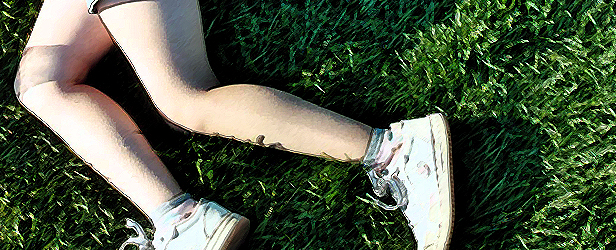
This piece is written for the club coach, recreation league coach, parent, dad, or neighbor who wants to help his or her team or child by giving the best possible information and training possible.
A typical sport practice lasts about two hours and looks a little something like this:
- Jog around the field a couple of times
- Stand in a circle and do a few stretches
- Spend the next hour and fifty minutes practicing the sport skill
The lack of a proper warm up is enough to injure your athletes. Tack onto it the fact that your athletes lack the ability to move safely and efficiently and you’re asking for your star player to be out for the rest of the season.
Female athletes are at a severe disadvantage when we look at the lower body and anterior cruciate ligament (ACL) injuries of the knee. There are a host of reasons for this. I want to touch on three common ones that will get you, the coach or parent, moving in the right direction.
1. Lack of strength:
Sure, you may already know that girls are weaker than guys. But the severe lack of eccentric strength is hurting these young women. (Eccentric strength can be defined as negative force where the muscle becomes longer under tension. For example, when the foot hits the ground to cut and change direction, the hip, knee, and ankle joints all bend (flex) and undergo eccentric forces. They contract hard to stop the body from moving, but the muscle is actually getting longer.) Most girls are too weak to produce force into the ground to run. Now, we're asking them to stop and change directions on a dime. The amount of eccentric force that occurs with that movement is tremendous.
2. Proper running form:
Some people don’t think that running technique can play a big role in sports performance development. Well, it can, especially when we're talking about running safely and efficiently. Below is a graph of the amount of force placed on the ACL during the walking cycle. As you can see, the most force is on the ACL when the heel strikes the ground. There isn't as much force as the foot rolls through to the toe-off phase (1).
Most girls tend to run in a heel-to-toe fashion, which, as we now know from the graph, places the highest amount of force on that ACL ligament. When the female athlete attempts to slow down in order to cut and change direction, that heel strikes the ground first (because her running technique is poor and she has poor strength), placing a large amount of torque on the ACL.
3. Anterior pelvic tilt:
This is very typical and something that most athletes don’t even know they have. Anterior pelvic tilt (APT) is commonly characterized by a swayed lower back. What does this tell us about the athlete? First, she has tight hip flexors and weak hamstrings. Second, she also has tight lower back muscles and weak abdominals.
What does this have to do with ACL injuries? Being in this position doesn’t allow for very good knee drive during sprinting. Because there isn’t much knee drive, the athlete is heel striking (mentioned above). The weak hamstrings and glutes aren’t working properly, which leaves the athlete having to compensate by using other muscles and ligaments to support the load. The weak abdominals are another straw breaking the camel’s back.
These three things are so very common in our young female athletes. Over 70- percent of ACL injuries are non-contact in nature, meaning the injury didn't happen as a result of coming in contact with another athlete. The majority of these non-contact injuries come from the athlete decelerating quickly and planting or cutting the foot (2). (The Q angle of the femur does play a role in ACL injuries because of the stress it places on the knee and ACL. There are quite a few articles and resources out there regarding the Q angle, so I decided not to address it in this article.)
By addressing the issues above, we can reduce the risk of ACL injuries in female athletes. Coaches, parents, and athletes, take this seriously. Strengthen your athletes the right way and teach them how to move properly. We're doing these girls a disservice if we continue to overlook these issues by practicing more and running them into the ground. Start now with a solid foundation.
References
- Shelburne K, Pandy M, Anderson F, Torry M (2002) Anterior cruciate ligament forces in the intact knee during normal gait. Paper presented at (the 4th World Congress of Biomechanics) Calgary (AB), Aug 4–9, 2002.
- Padra Darin (2004) “Anterior Cruciate Ligament (ACL) Injury Prevention." TheACC.com 1 Oct. 2004.
Julia Ladewski On-Line Training and Nutrition Services











